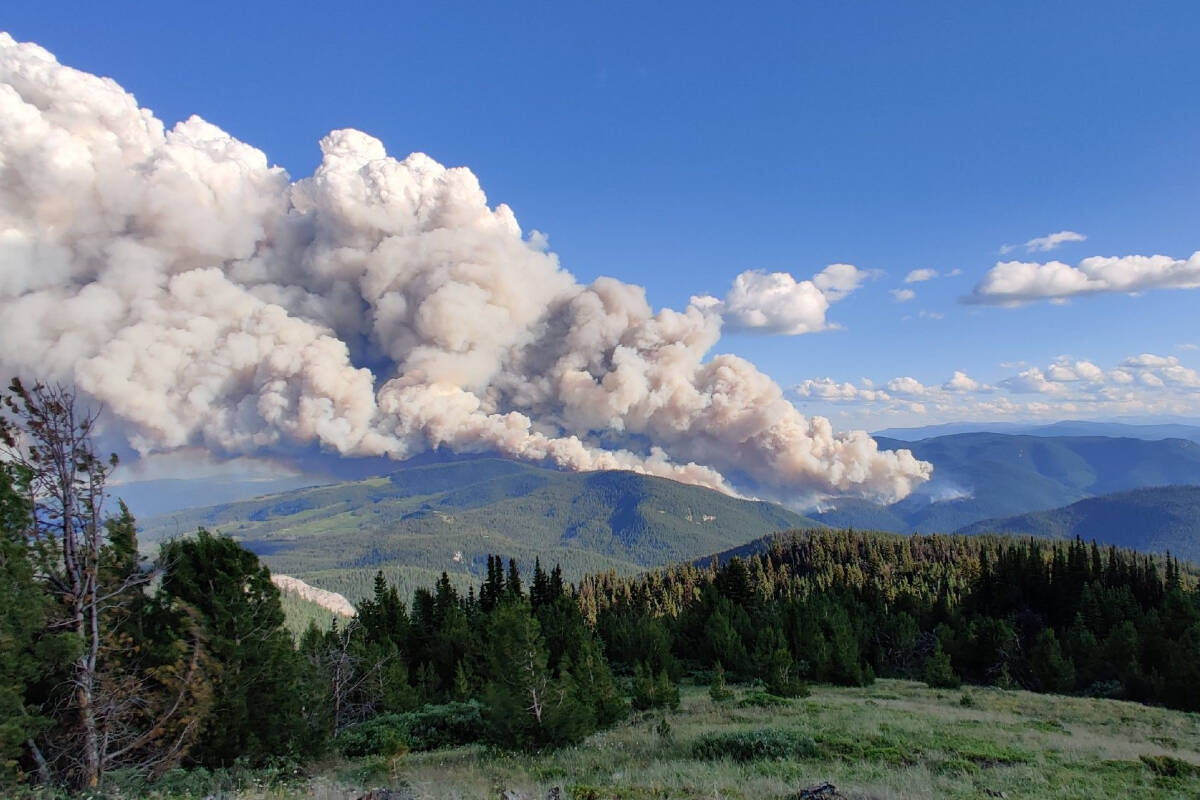As of Friday (Aug. 5), there are 62 active wildfires burning in B.C. and the Wildfire Service says more are expected through August.
Rain and cooler temperatures have dampened fire activity in the north, but southern B.C. is expected to continue seeing hot and dry conditions throughout August.
Though more fires may be coming, some communities are already dealing with aggressive wildfires.
The entire community of Olalla, about 40 kilometres south of Penticton, has been evacuated. The Okanagan-Similkameen Regional District also put the Village of Keremeos and rural Keremeos on evacuation alert.
READ MORE: All of Olalla under evacuation order as Keremeos Creek wildfire grows in Okanagan
More than 300 properties had previously been evacuated as the Keremeos Creek wildfire consumed more than 42 square kilometres of rugged terrain in the Penticton area.
Public Safety Minister Mike Farnworth said wildfire activity this year has now resulted in almost 400 property evacuation orders and 500 evacuation alerts, while at the same time last year there were 4,300 evacuation orders and 21,000 alerts.
So far, 528 wildfires have burned 220 square kilometres in B.C. Of the 62 active wildfires, six are wildfires of note.
Keremeos Creek:
Estimated fire size: 4,250 hectares
Location: 21 kilometres southwest of Pentiction
Cause: Under investigation
B.C.’s largest blaze grew overnight as downslope winds in excess of 30 kilometres an hour drove the fire downhill along Highway 3A towards the town of Olalla.
Crews have been using a combination of aerial and hand ignitions to prevent the fire from expanding. One of the impacts of this planned ignition was that some debris rolled onto Hwy 3A (between Keremeos and Kaleden) forcing a closure for about 30 minutes. Crews were able to deal with it quickly.
There are 201 BCWS firefighters, 15 helicopters, and 38 pieces of heavy equipment working on the fire. The wildfire service is bolstered by 170 structural protection personnel from fire departments across BC for a total crew complement of 371 firefighters.
Nohomin Creek:
Estimated fire size: 3,700 hectares
Location: 1.7 kilometres northwest of Lytton
Cause: Suspected to be human-caused; under investigation
B.C.’s first wildfire of note for 2022 is showing diminished fire behaviour in the Stein Valley Nlaka’pamux Heritage Park. The fire’s south, northeast, and east flanks remain stable with no active fire behaviour.
The current precipitation and cooler temperatures will reduce fire behaviour over the next few days. However, temperatures are forecast to return to above seasonal this weekend and burning conditions will also return to what was experienced in late July.
There are 55 firefighters supported by two helicopters and four Lytton First Nation firefighters. Aerial resources are being shared between the Nohomin Creek wildfire and Maria Creek wildfire.
Maria Creek:
Estimated fire size: 1,004.3 hectares
Location: 6 kilometres northeast of Pavilion
Cause: Lightning
The Maria Creek wildfire received 16mm of rain on Thursday, which is expected to reduce fire behaviour and growth until Tuesday. The fire continues to burn in old cut blocks, where fuels are patchy and disorganized. Once there is a return to above seasonal temperatures, the fire will most likely be more active.
Heavy equipment is being used to build containment lines by connecting existing roads and cut blocks. Ground crews are establishing hose lays to reinforce the fuel breaks.
There are 45 firefighters, 2 helicopters and 11 pieces of heavy equipment battling this blaze. It is being managed by the Nohomin Creek wildfire Incident Management Team.
Connell Ridge:
Estimated fire size: 1,143.1 hectares
Location: 15 kilometres south of Cranbrook
Cause: Lightning
The Connell Ridge wildfire grew by approximately 200 hectares along the north and northeastern flank as of Friday morning. That section of the fire is burning in steep and inoperable terrain.
Less aggressive fire behaviour was observed yesterday and today because of cooler temperatures. Fire behaviour is expected to increase as temperatures rise over the weekend.
Crews are working to determine the most suitable location for containment lines on the east flank and northwest.
There are 66 firefighters, five helicopters and 13 pieces of heavy equipment battling this fire as well as a Structure Protection Specialist and an Incident Management Team and other operational and support staff supporting the response.
Briggs Creek:
Estimated fire size: 1,680 hectares
Location: 11.5 kilometres west of Kaslo
Cause: Lightning
The Briggs Creek wildfire has not grown significantly and is expected to remain stable. Fire behaviour has been mainly rank 1, meaning that it is a smouldering ground fire with a slow rate of spread.
This fire is very visible to the town of Kaslo and surrounding areas. In the evening hours, the fire is magnified by the darkness and may appear closer than it is. Ground crews continue to monitor the fire late into the evening and early morning hours to ensure we are aware of any unwanted growth.
Steep terrain around the fire won’t allow for the use of heavy equipment at this time. The majority of this fire is growing upslope at high elevation in unworkable terrain, responder safety is the number one priority, this area poses significant challenges to crews and resources.
There are nine firefighter and one helicopter working on this fire.
Watching Creek:
Estimated fire size: 270 hectares
Location: 16 kilometres northwest of Kamloops
Cause: Suspected to be lightning
The Watching Creek wildfire is currently burning out of control, though there has been no significant growth since Aug. 2.
Recent rains reduced fire behaviour after 10mm of rain fell on the area. The weather is expected to warm slightly today compared to the previous two days with variable cloud. Fire behaviour is expected to remain low.
Crews will continue to work on water delivery and mop up in the northeast corner of the fire. Aviation resources will continue to support the incident if and when necessary but with reduced fire behaviour and crews direct attacking the fire these resources not expected to be necessary.
READ MORE: Intensified wildfire activity expected to continue through August: BC Wildfire
– With files from The Canadian Press

